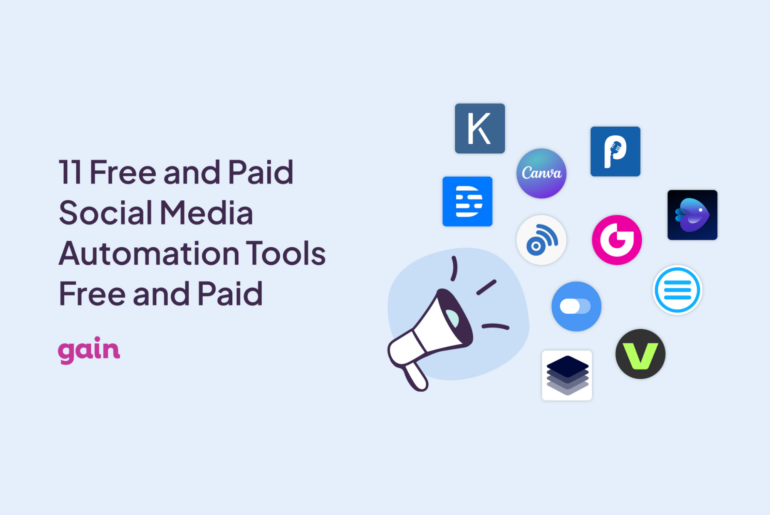Photo by Sebastian Pandelache on Unsplash
Technology continues to take over every aspect of our life. Content creation for social media, vlogs, and blog posts has taken the world by storm. The need to hop on this trend is key for brands to succeed.
As a marketer, you must be aware that your marketing strategies hold the power to make or break a brand, and content creation is an essential marketing strategy that can help you boost sales and profits. Keep reading as we explore content creation, why it’s important, and tips on how to incorporate it into your advertising plan.
What Is Content Creation?
Content creation helps you convey information about your brand and products through visuals or other engaging mediums and then publish it for your targeted audience to see. Most content creators put out material with a specific purpose or goal in mind. For example, while a teenager might make their own TikTok videos to connect with their online friends’ community, a clothing business might hire a model and photographer to create content for its clothing catalog. The business’s marketing team will post the pictures on its social media accounts to promote the clothes.
In other words, what content you create and how you share it depends on the purpose of your content marketing. An individual who visits a website intending to learn about a company’s products and services is much more likely to show an interest in purchasing them if the company shares information that resonates with them.
Why Is Content Creation Important?
1. Establishes a Brand
When you share content, you’re essentially helping customers form an opinion about your brand. Consistently creating and publishing valuable information helps you build a solid, trustworthy relationship with your clients and ensures that they’ll help your business grow through word-of-mouth.
2. Provides Value
If your content provides your audience with solutions to their problems, it will become valuable to them. They’ll appreciate the effort you have put into looking out for them and will keep coming back for updated or new products and services. Your content has the power to educate, entertain, and inspire readers.
3. Helps Portray Expertise in Your Industry
There’s a great deal of information available on the internet, making it difficult for consumers to obtain the information they require at all times. Creating content that adds value establishes you as an expert in your subject matter so customers can trust and follow without fear or doubt.
Examples of Content Creation
1. Videos
Videos are perhaps one of the most successful forms of creating engaging content with a significant return on investment (ROI). It can help drive traffic to a website, enhance conversions, and increase social media shares. There are two main types of video content: long-form and short-form. Both are great for reaching the desired audience and helping with a business’s growth.
2. Blogs
Most businesses these days use blogs to grab the attention of their targeted demographic. Compared to other types of content creation, blogs are easy to write, maintain, and publish. They’re also a great way to be noticed by search engines and moved up in Google search results, making them highly shareable and increasing traffic to your business’s website.
3. Infographics
Infographics help present complex information like data, research, and statistics in a digestible, visually appealing, and shareable way. They’re responsible for backlink building, which helps increase your consumer base.
4. How-to Guides
A how-to guide explains how a task can be achieved or how the audience can perform a specific activity through instructional content. If you’re looking to build trust, grow email lists, and share expertise, this is the type of content creation you need to incorporate into your marketing strategy.
Developing Content Creation Strategies
1. Identify Important Goals
As is the case with a traditional marketing campaign, make sure your content strategy aligns with your business’s marketing goals. Firstly, identify goals that can help generate more leads, increase brand awareness, and attract more customers. You can use the SMART goal technique for specific, measurable, achievable, realistic, and time-bound goals. Identifying your goals will give you a clearer picture of your content creation strategies.
2. Create a Buyer Persona
To market your content to a specific audience, you need to determine who your customers are, what kind of information is helpful to them, and which outlets they frequent to consume content. Building a buyer persona with buying traits that represent your prospective customer will take you a long way.
A buyer persona will help you understand your target demographic’s preferences, goals, and challenges so you can write content they can relate to. You can even create multiple buyer personas for different target groups. Do your research to construct the personas that really speak to your target audience.
3. Choose a Content Format
Once you establish a buyer’s persona, it becomes easier to decide on the content type your audience is likely to engage with regularly, such as the media outlet they visit. It can be a blog post, e-book, infographic, video, or white paper. If your content serves your buyer persona, your content strategy will deliver results.
Additionally, it’s important to remember that you don’t have to stick to just one format for every piece of material you put out. Create informative content in different formats and measure customer engagement with each. A marketing planning tool like Gain allows you to manage all your content, whether it’s digital or not, in one place. This way, you can streamline your content creation and approval workflow and see all your marketing efforts in one content calendar.
The Bottom Line
When you consistently create meaningful content for your audience to consume, you keep things exciting and push them to come back for more. Covering key points and soft spots with your content will enable you to win over and expand your consumer base. Whether it’s how-to videos or social media, companies have their own way of achieving their marketing goals. Focus on the tips and examples mentioned above to reap the rewards.
Using a marketing and social media management tool like Gain will make managing all your digital content easy and efficient. Content creators can upload all their assets to Gain for you or other stakeholders to approve. That way, all your content will live in one place, each with its own history of change requests and approvals right next to it. Try Gain free to see for yourself how much easier managing all your digital content can be!






